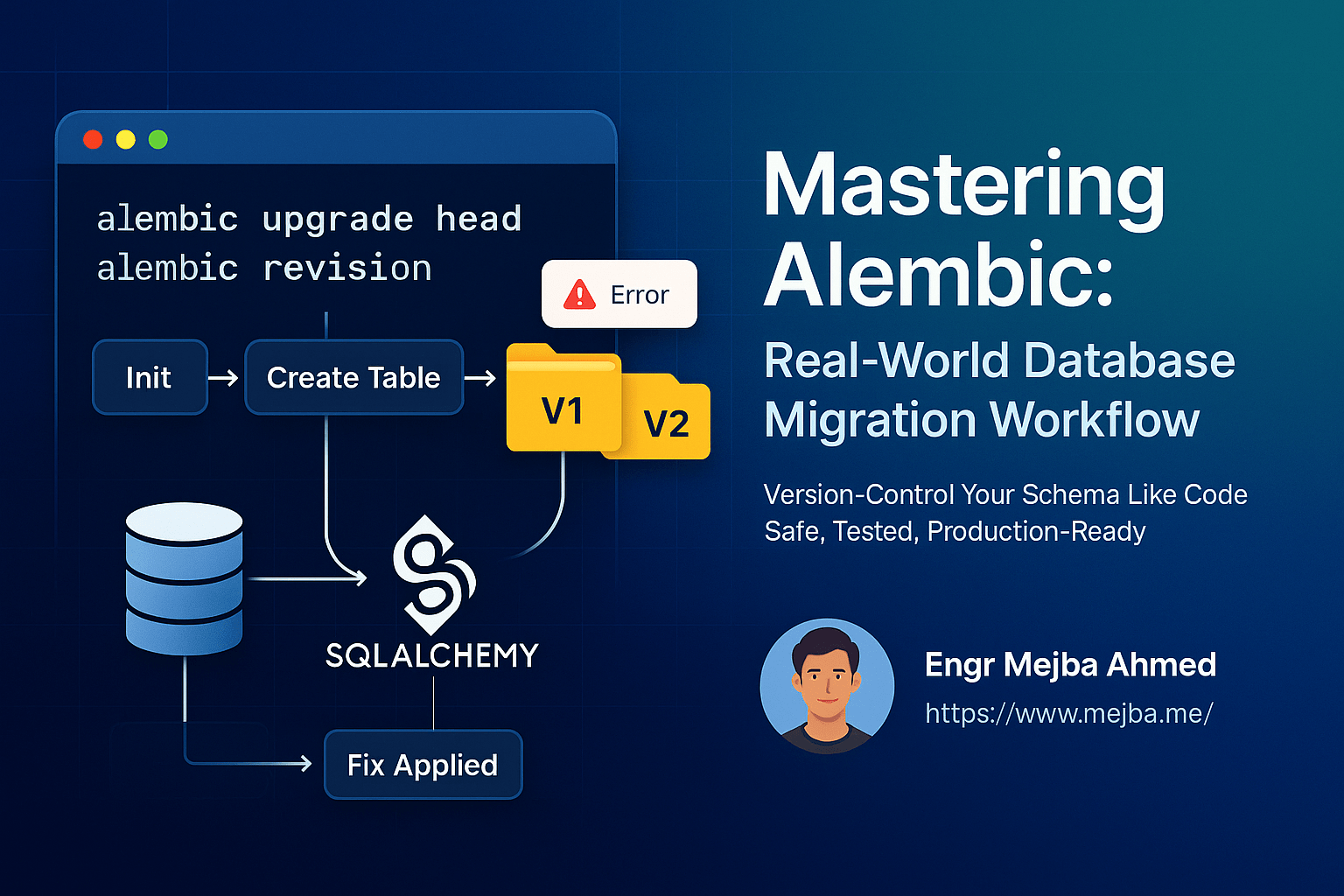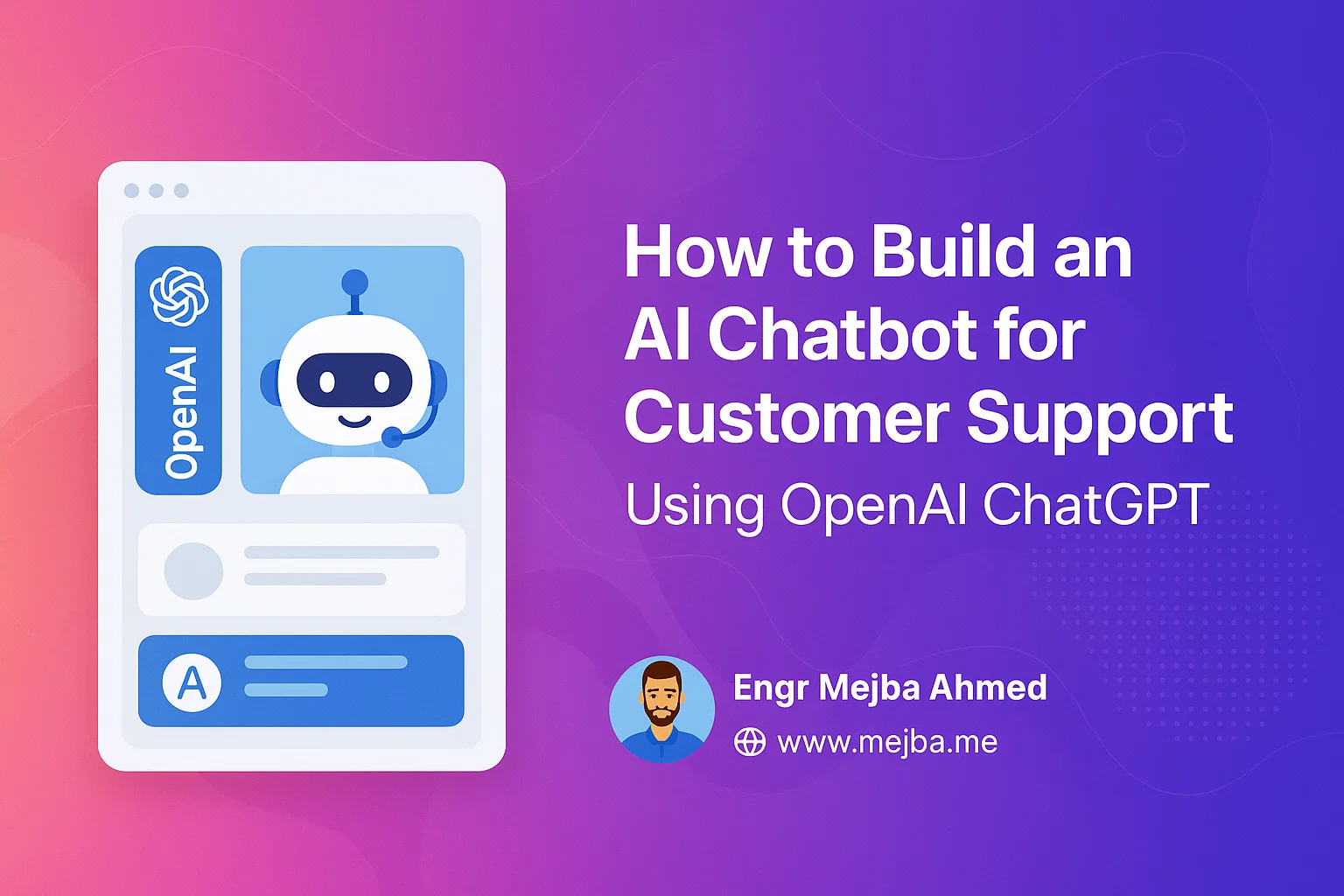Introduction
If you’ve ever worked with evolving databases in a live project, you know the dread of managing schema changes without breaking production.
That’s exactly where Alembic shines — a powerful, lightweight database migration tool for Python projects that lets you version-control your database schema like your code.
In today’s live case study, I’ll walk you through my real-world workflow for setting up Alembic, running essential commands, and fixing the errors that inevitably pop up. By the end, you’ll not only understand what Alembic is and how it works, but you’ll have a battle-tested checklist to keep your database migrations clean, safe, and production-ready.
Whether you’re a backend developer, DevOps engineer, or just starting with SQLAlchemy, this guide is your one-stop resource to mastering Alembic in the real world.
What is Alembic and Why It Matters
Alembic is an open-source database migration tool designed to work with SQLAlchemy. Think of it as Git for your database schema.
Without Alembic, changing a table structure means manually running SQL scripts or altering the database directly. That’s risky, error-prone, and hard to replicate across environments.
Alembic solves this by:
- Tracking schema changes in migration scripts
- Applying and rolling back migrations with simple commands
- Keeping environments in sync (local, staging, production)
- Making collaboration safer for teams working on the same database
Live Case Study — My Alembic Migration Workflow
Here’s the exact workflow I used while setting up migrations for my AutoblogX backend project.
Step 1 – Install Alembic
pip install alembic
Step 2 – Initialize Alembic
alembic init alembic
This creates the alembic directory with:
env.py(core config)versions/folder (migration scripts)alembic.ini(main Alembic config file)
Step 3 – Configure Database Connection
In alembic/env.py:
from logging.config import fileConfig
from sqlalchemy import engine_from_config, pool
from alembic import context
from dotenv import load_dotenv
import os
load_dotenv()
config = context.config
database_url = os.getenv("DATABASE_URL")
config.set_main_option("sqlalchemy.url", database_url)
fileConfig(config.config_file_name)
This ensures migrations use the same database URL as your app.
Step 4 – Create First Migration
alembic revision -m "create_users_table"
A Python script appears in versions/ where you define the table schema using SQLAlchemy.
Example:
def upgrade():
op.create_table(
'users',
sa.Column('id', sa.Integer, primary_key=True),
sa.Column('username', sa.String(50), nullable=False),
sa.Column('email', sa.String(255), nullable=False)
)
Step 5 – Apply the Migration
alembic upgrade head
Now the users table exists in the database, and Alembic records the applied migration in the alembic_version table.
Step 6 – Adding New Tables (Live Example) When I added social media tables:
alembic revision -m "create_social_tables"
I defined multiple tables like social_accounts, social_pages, and social_posts in the same migration file, ensuring all related tables were version-controlled.
Common Alembic Commands (With Examples)
| Command | Purpose |
|---|---|
alembic init alembic |
Initialize Alembic |
alembic revision -m "message" |
Create new migration file |
alembic upgrade head |
Apply latest migration |
alembic downgrade -1 |
Rollback last migration |
alembic current |
Show current migration |
alembic history |
List migration history |
alembic stamp head |
Mark DB as up-to-date without running migrations |
Common Alembic Errors and Fixes
Error – “Can't locate revision identified by...” Cause: A migration file is missing or was deleted. Fix:
- Check the
versions/folder for the missing file - If file is lost, manually create a new revision with the correct state and use
alembic stampto sync
Error – Wrong Database URL in env.py
Cause: .env file not loaded or wrong path.
Fix:
- Confirm
load_dotenv()is correctly placed inenv.py - Verify
DATABASE_URLin.env
Error – Target Metadata Missing Cause: Alembic can’t auto-detect models. Fix:
- Import your SQLAlchemy models in
env.py - Set
target_metadatato your Base model’s metadata
My Productivity Tips for Alembic
- Always commit migration scripts — never rely on local changes
- One migration per feature for cleaner rollbacks
- Use
--autogeneratewith caution — review the script before runningupgrade - Keep
alembic_versiontable in sync between environments
Quick Takeaways
- Alembic brings Git-style version control to your database schema
- Initialize, configure, and track migrations with ease
- Commands like
upgrade headanddowngrade -1are your bread and butter - Review auto-generated migrations before applying
- Keep your migration files organized and committed to source control
Call to Action
If you found this guide useful, share it with your team or bookmark it for your next project. For more real-world Python + DevOps workflows like this, subscribe to my developer newsletter or connect with me on LinkedIn.
FAQ
Can I use Alembic without SQLAlchemy? No, Alembic is built to work with SQLAlchemy ORM or Core.
How do I handle migrations in a production environment? Always test migrations in staging, backup your database, and apply changes during maintenance windows.
What’s the difference between upgrade and stamp?
upgrade applies migrations, while stamp marks the DB version without running them.



